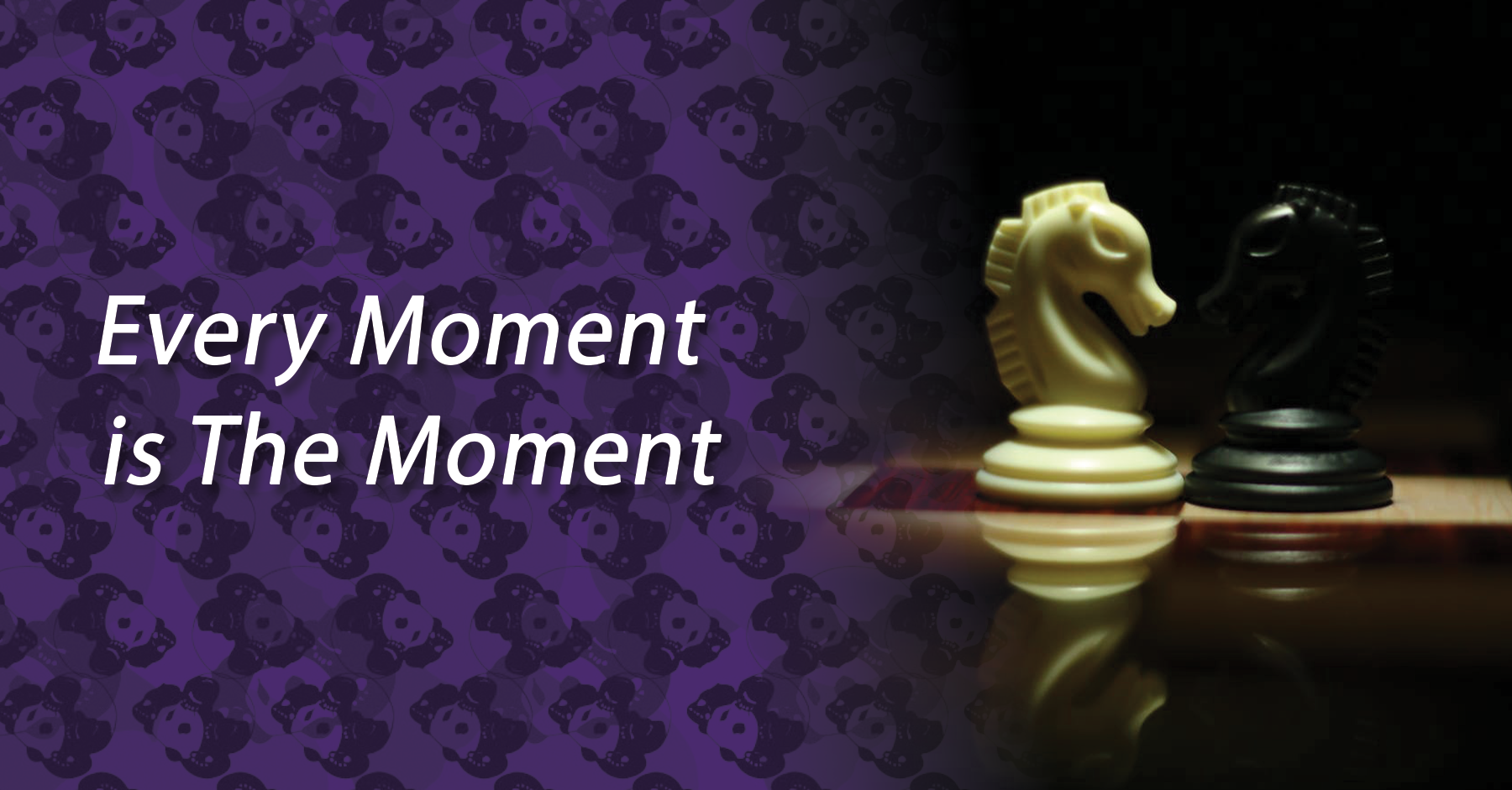
Every Moment is The Moment
I remember the moment I lost the match. It had been a closed-guard battle up until that point. I never wanted it to be one and hadn’t prepared for one, but there we were. He had rushed me mid half-guard pull and I had to stop the advance. In seconds that felt like hours, I had the collar choke on him and was watching his face turn purple. Then my grip slipped.
Do I attack with it again? Yes, I thought. He’s weak here. He’s struggling to defend. I put the choke on and tired, loosening the grip, but he didn’t posture. The chest-bump sweep exploded out of me before I could think to do it. My opponent posted and staved off the sweep. A dog fight ensued. I came up with the single-leg takedown and put him on his ass, landing in side control.
I glanced at the board. Two points, two advantages. Good, I think. I can work with that. I can hold. There was 1:30 left on the clock and though I didn’t know it yet, I had just lost.
I can see it now. I was already off the mat in my mind, catching my breath for the gold-medal match. I had lost Presence. This was Problem 1. Enough time to lose remained, and I was only on the mat in body, not in mind. Problem 2 would arise in a mere 30 seconds.
My opponent bridged out of my side control and scrambled to his feet. I shot on him and once again came up with the single leg, but we edged out of bounds and were reset at the center of the mat. One minute to go, I thought. Just need to maintain.
The ref’s hand dropped and he bull-rushed me again. I worked the half-guard sequence once more, looking to sweep immediately, but failed. I decided to hold half guard. I can hold this for 50 seconds, I thought. I could hold this for 5 minutes.
Prevent defense
You see this moment play out in so many NFL games. The leading team stops trying to enforce its will, to drive the ball down the field, they default to a prevent defense. Professional athletes do it too. At the height of their careers, they start to coast. They abandon relentless growth, and soon they’re overtaken by hungrier adversaries. The momentum of the athlete or the game shifts. The unthinkable happens. The half guard -- my half guard -- gets passed.
My opponent exploded through the leg entanglement. I attempted to stave him off with reverse de la riva, but he shucked off the posting foot and soon had side control. A moment later, and he was in mount. A half-hour later, I was standing on the lowest spot on the podium, wondering what went wrong. It’s clear what I needed now:
- Presence: Sharpened attentiveness to the moment unfolding.
- An Internal Solution: An unrelenting drive to advance the position, to play my game, that not only is undeterred by whatever my opponent is doing, but uses what he is doing as fuel.
Battlefield tactics
These things became clear to me later that night in my hotel room. I couldn’t sleep and was watching the Ken Burns documentary, The Civil War. It was the second day of the Battle of Gettysburg, and the 20th Maine Volunteer Infantry Regiment was holding the extreme left flank of the Union Army on a hill called Little Round Top. The battered regiment was the only thing standing between the Confederates and Washington, D.C. The fate of a nation was in their hands.
The men from Maine had broken wave after wave of Confederate charges in their strong, defensive position, but they were running low on ammunition. What to do? Their commanding officer, Colonel Joshua Lawrence Chamberlain, a college professor of rhetoric, came up with an Internal Solution that embodies what Robert Persig would call Dynamic Quality.
Most of us would hold the position, just as I had held onto my half guard. Battlefield tactics dictate that if you hold the high ground -- you do not relinquish it. But holding the position with dwindling ammunition and scant hope of reinforcement meant certain defeat for Chamberlain and his men.
Surveying the ground, Chamberlain ordered a bayonet charge down the hill, taking advantage of the momentum gravity would provide. As the charge progressed, he ordered the men on the extreme left to pivot like a gate on a post, smashing into the Rebels from the side. This Internal Solution, which took advantage of the fixed tactics of the Confederates (taking the heights) and the dynamism that the terrain could generate, worked. The Rebels were shocked. Many threw down their guns at the site of the charging Union Army.
I had my answer. There can be no more holding. Every moment in a match is the moment. It’s the moment that drives you closer to winning -- including the moments where everything seems to be going wrong, where all hope seems to be lost. This is when we must look within to channel what is happening, what our opponent is doing, and turn it into a victory.
Joe Hannan is a consultant, writer, and purple belt at Princeton Brazilian Jiu-Jitsu. You can see more of what he’s up to here or follow him here.
Other articles:
Quick links
Contact us
About us
Quality BJJ gear at fair prices, available all year. Founded in 2012 to provide an alternative to high-cost, limited edition gis. Dive into the BJJ lifestyle with us—join the Panda Nation!"
